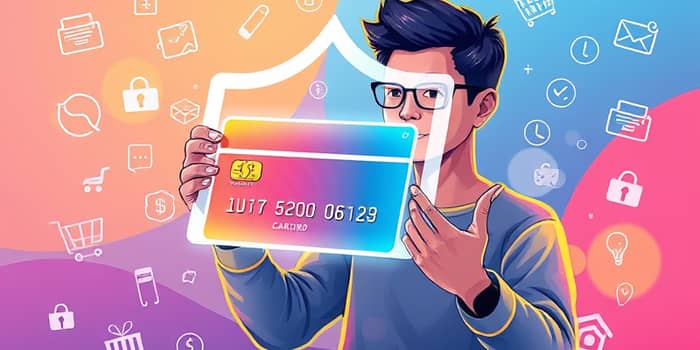
In an era of ever-rising data breaches and card-not-present fraud, consumers seek robust tools to protect their financial information. Virtual cards have emerged as a powerful solution, offering an extra layer of security online and delivering genuine peace of mind with every purchase.
Virtual credit cards are digital-only payment numbers linked to your existing credit or debit account. They possess the familiar 16-digit card number, expiration date, and CVV code, but exist exclusively in the digital realm. When you generate one, you never expose your real card data to merchants, reducing the risk of theft and misuse.
Typically, you create a virtual card through your bank’s website, mobile app, or a browser extension. You can assign a spending limit, set an expiration date, or designate it as single-use. Once the transaction is complete, the number becomes invalid, rendering stolen credentials useless to fraudsters.
Virtual cards incorporate multiple safeguards that secure online transactions in ways physical cards cannot match. Each feature addresses a specific vulnerability, ensuring that your primary account remains insulated from attacks.
These capabilities drastically reduce the window of opportunity for attackers. Even if a breach occurs, stolen virtual numbers cannot be reused, and you retain full control to revoke or adjust privileges at any time.
Beyond protection, virtual cards deliver enhanced privacy and control for everyday spenders. By masking your true account information, they align with stringent privacy regulations and minimize your digital footprint.
As you juggle multiple subscriptions—from streaming platforms to software trials—virtual cards simplify tracking and eliminate surprise charges. You no longer need to hunt through account statements to identify recurring fees; each merchant has its own dedicated number.
Virtual cards shine in numerous contexts, but they are not a universal replacement for physical cards. Understanding both sides ensures you deploy them effectively.
However, virtual cards are rarely accepted at brick-and-mortar stores unless integrated into mobile wallets. Additionally, car rentals and hotel bookings may require the original plastic card for identity verification during check-in or pickup.
Availability varies by issuer and region; not all banks offer this service yet. And while multi-use virtual cards exist for recurring payments, some merchants may not support updating expired or replaced numbers, necessitating a physical backup in rare cases.
To illustrate how virtual cards differ from their physical counterparts, consider this side-by-side overview:
Major financial institutions like Capital One and Chase now integrate virtual card services directly into their mobile apps and browser extensions. Analysts consider virtual cards a cornerstone of comprehensive online security strategies, alongside strong passwords and two-factor authentication.
“Virtual cards add an extra layer of protection that drastically reduces fraud risk,” notes one security expert. Consumers are encouraged to activate alerts for all transactions and review statements regularly to spot anomalies, ensuring that virtual cards enhance security rather than replace vigilance.
Begin by checking your bank or credit card issuer’s app or website to see if they offer virtual card generation. If available:
1. Log in and locate the virtual card feature. 2. Specify limits and expiration settings. 3. Use the generated number at checkout or through a browser extension. 4. Monitor transactions and disable the card when no longer needed.
For best results, create a new virtual card for each merchant or subscription, keeping risks compartmentalized. Should a breach occur, only that single card is affected, leaving your main account untouched.
As online shopping continues to flourish, so does the sophistication of fraud schemes. Virtual cards empower consumers with instant control over transaction safety and safeguard their sensitive data like never before. By integrating this technology into your digital wallet, you’ll shop with confidence, knowing that your financial peace of mind is in strong, capable hands.
References













